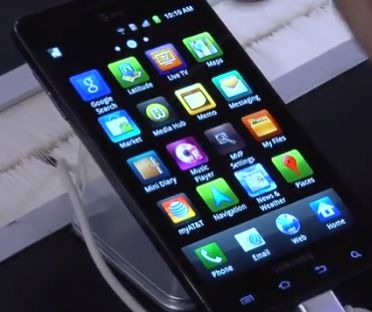CES 2012: With LG-VMware, 'bring your own device' stakes get higher


Until now, we haven't had a good provisioning system with which to pair it, so that enterprises and carriers can deploy the technology to the masses.
LG mentioned briefly during its press conference this morning that it would "in coming months" offer phones that would carry VMware virtualization on carrier Telefonica, accelerating the scramble for players in the sector to strike deals with the hope of winning early market share.
If you're unfamiliar, the disruptive technology -- which allows you to have completely isolated "personal" and "work" versions of the same device -- solves three problems: first, it helps secure corporate data in an increasingly "bring your own device" environment; second, it helps carriers manage operating system upgrade lag; lastly, it gives manufacturers the opportunity to fully separate phone hardware from software.
Earlier this year, VMware signed an agreement to pre-load its Horizon Mobile product -- which it obtained through the acquisition of TriCipher in 2010 -- on LG's phones. Horizon is a Type 2 hypervisor that requires virtualization to layer on top of an existing Android base; it's considered less efficient than a Type 1 hypervisor, which rivals Red Bend, Open Kernel Labs and Wind River offer.
I sat down with VMware here at CES to discuss this and they told me that their choice of going with Type 2 over Type 1 was a matter of "responding to marketplace demand." They said they believe that Type 1 was "not market ready" nor "scalable" and that going with Type 2 was a good-enough solution that avoids adding months of unnecessary delays to development timelines for devices.
"The end buyer just wants something that works," they said. In other words: first, not best.
LG is no doubt the first of many manufacturers who will load VMware's offering on their devices, but the question is what the other players will do in response. Red Bend and Open Kernel Labs are formidable independent companies who have strong carrier relationships; Wind River benefits from Intel's largesse.
Who will buy Red Bend or Open Kernel to shore up their offerings before it's too late? Google, Samsung, even Microsoft are surely interested in securing their piece of the pie -- but no company has made any public moves yet. In the meantime, Red Bend and OKL continue to trickle out details of their developments while Wind River keeps mum, presumably because it's working to achieve full integration with Intel's forthcoming mobile platforms.
For LG and others, VMware has tremendous name recognition in the enterprise -- no doubt that's why otherwise consumer-oriented OEMs want to partner with it; to curry favor among a loyal customer base -- and it's no doubt a major threat to Blackberry maker Research in Motion, whose aging hardware and platforms aren't nimble enough to outstep the competition nor address the "BYOD" era that's enterprise customers already find themselves in.
And the future possibilities remain enticing for both employers and end users: with hypervisors, you could simply swap the operating system of a device for another -- a boon to a manufacturer who would rather make a single device that can be later imaged by the carrier according to its preference. With that kind of capability, Android as a platform would become even stronger. And leave RIM to make its last stand in the enterprise.
For now, though, it's a race to see who can best and most quickly address the "BYOD" crisis. With capable rivals breathing down its back, VMware is hoping that its early moves to market will help it lock up as many partners it can before its rivals crash the party.
Related on ZDNet: